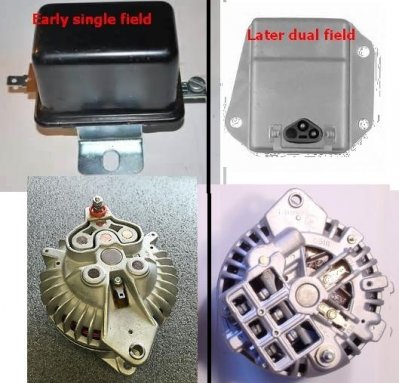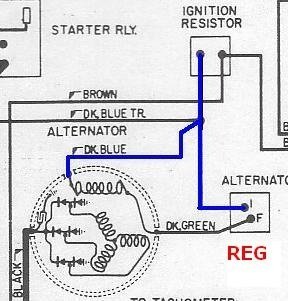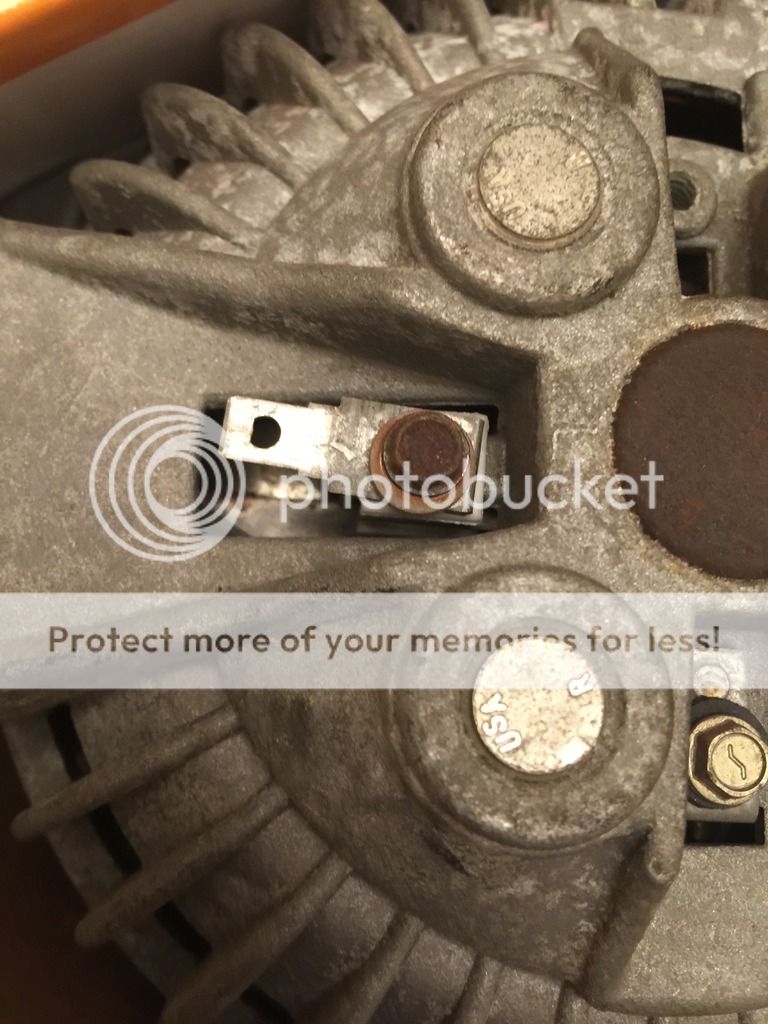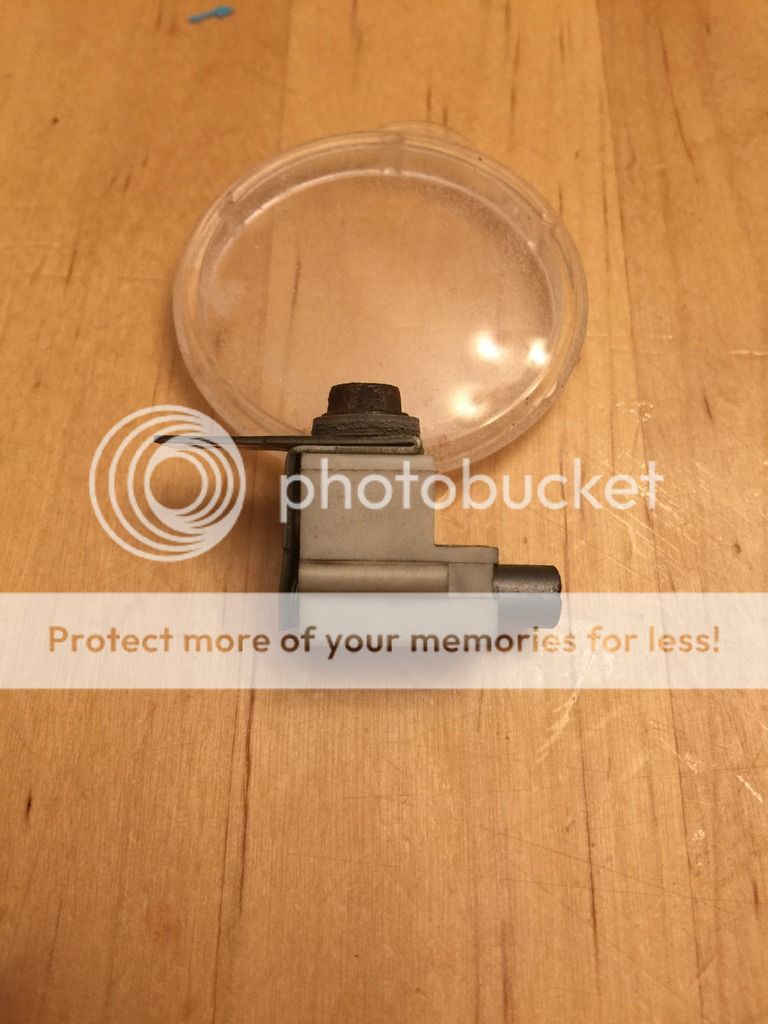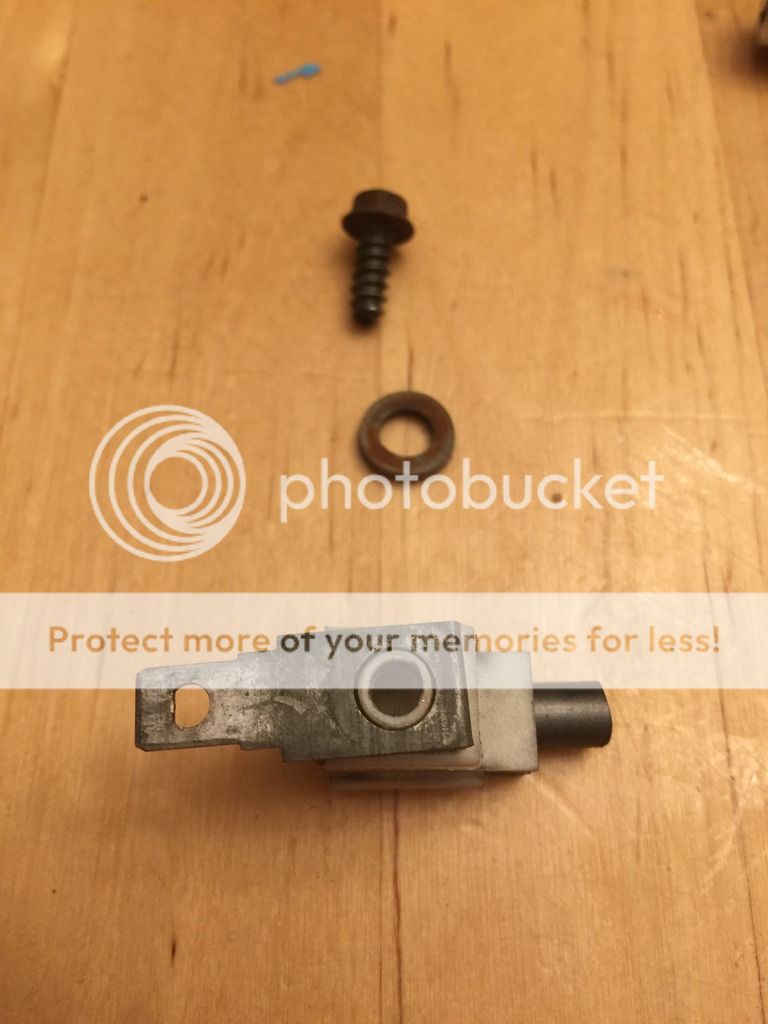Lets state how it works every system
Mech reg/single prong alt ( earlier roundbacks )
-Reg gets the reference voltages negative from chassis and positive from ign switch ( blue wire )
-once the voltage required is set ( via mechanical relay system inside regulator ) regulator send regulated POSITIVE source ( more or less according with what regulator senses ) to the single prong
alternator through the green wire, which is a brush to feed the rotor. This brush is isolated from
alternator chassis being a positive and regulated source.
-The other field, negative, is feeded to the second brush via chassis, since this is not isolated and of course is constant.
Electronic reg/dual prong alt ( 70/71 roundbacks and all squarebacks )
-Like the earliers, gets negative voltage from chassis and positive voltage from ign switch ( blue wire ).
-the difference on this system is the ign system positive source ( blue wire ) is spliced and reachs AT THE SAME TIME one of the
alternator prongs, of course isolated from chassis. This time the constant source is positive, not anymore the negative.
-regulator sends to the second prong/brush on
alternator a REGULATED NEGATIVE SOURCE through the green wire, so these are the reasons why both brushes are now isolated, one positive constant, the other a regulated negative source ( hence the reason why must be isolated from chassis too, because is not anymore constant )

